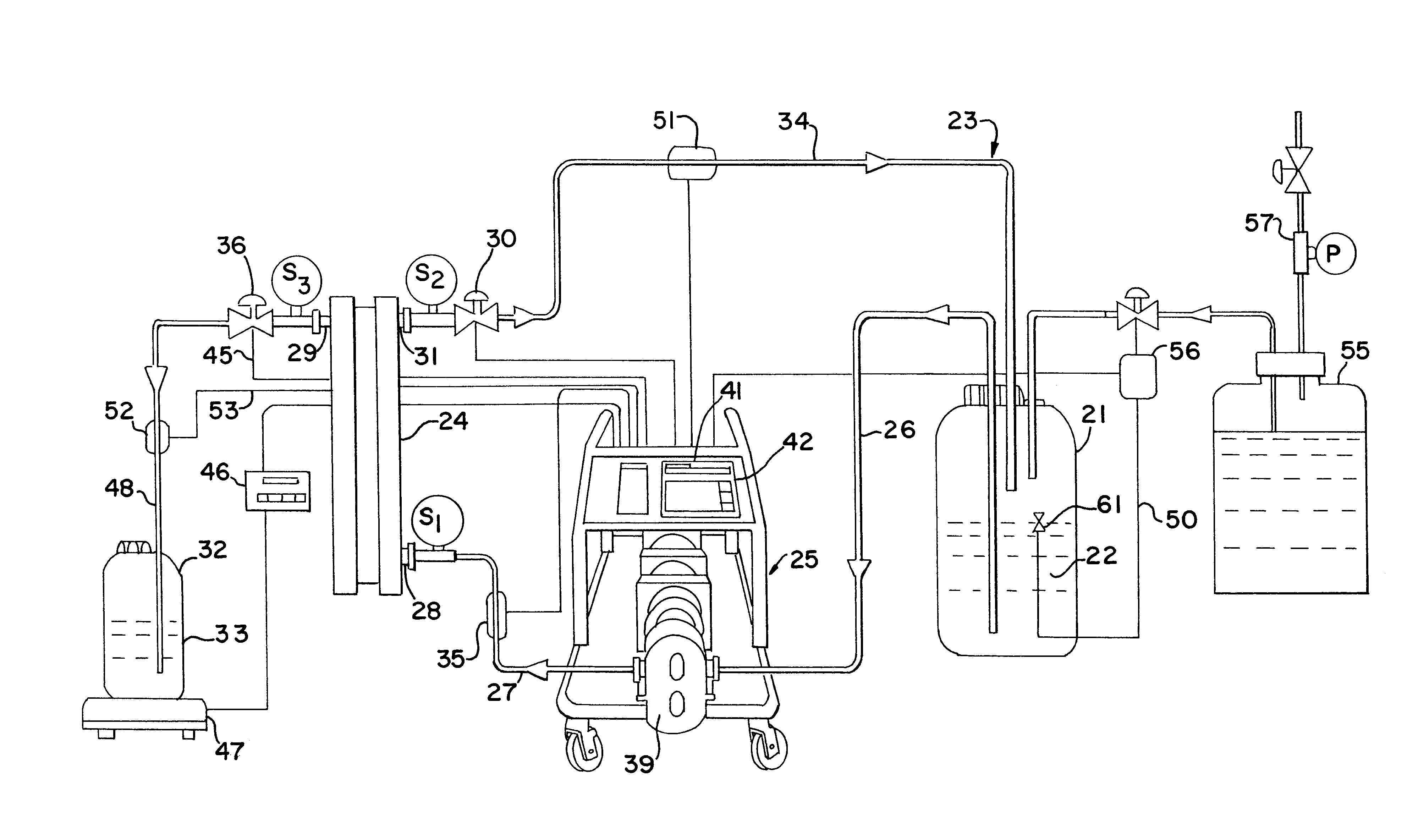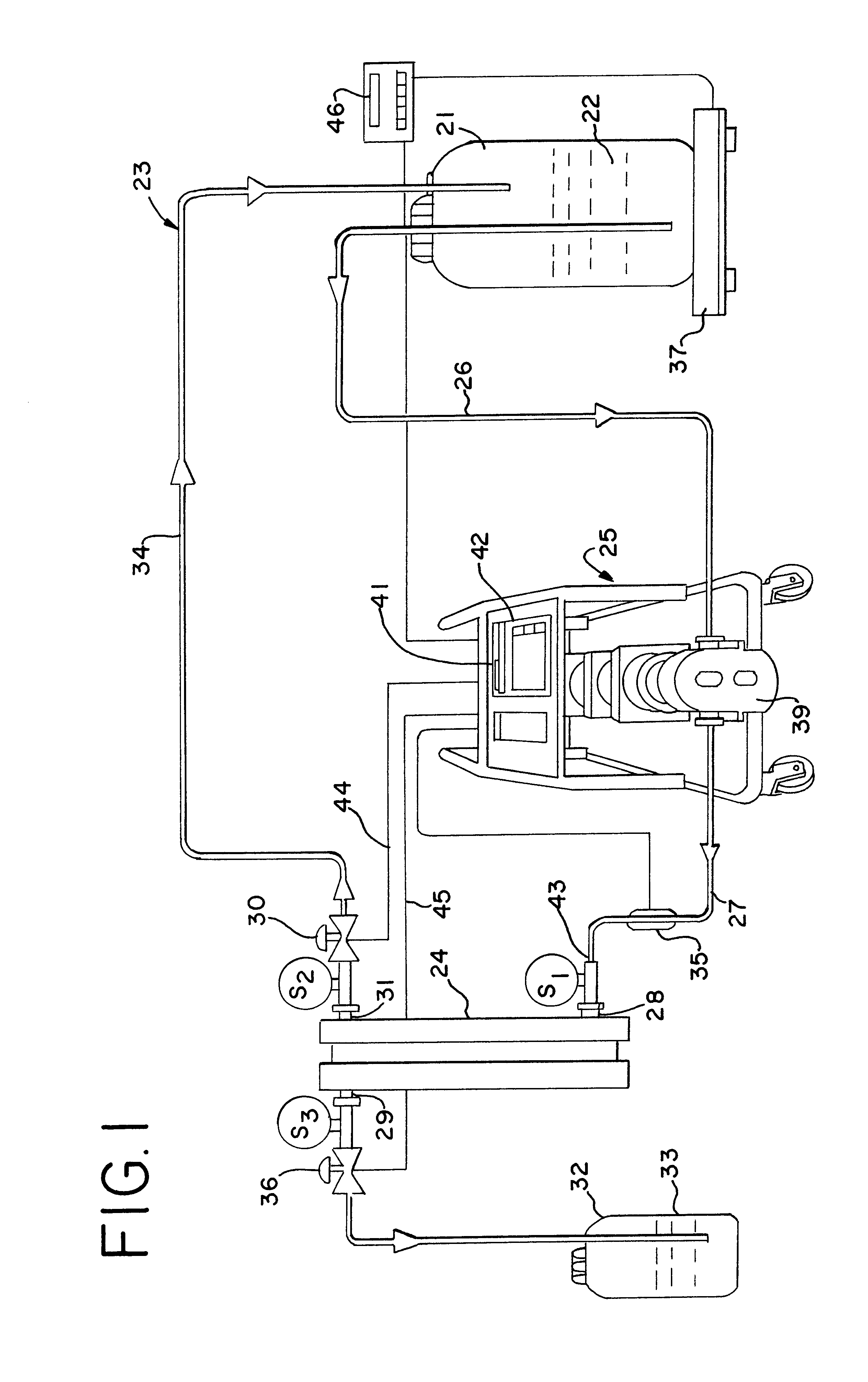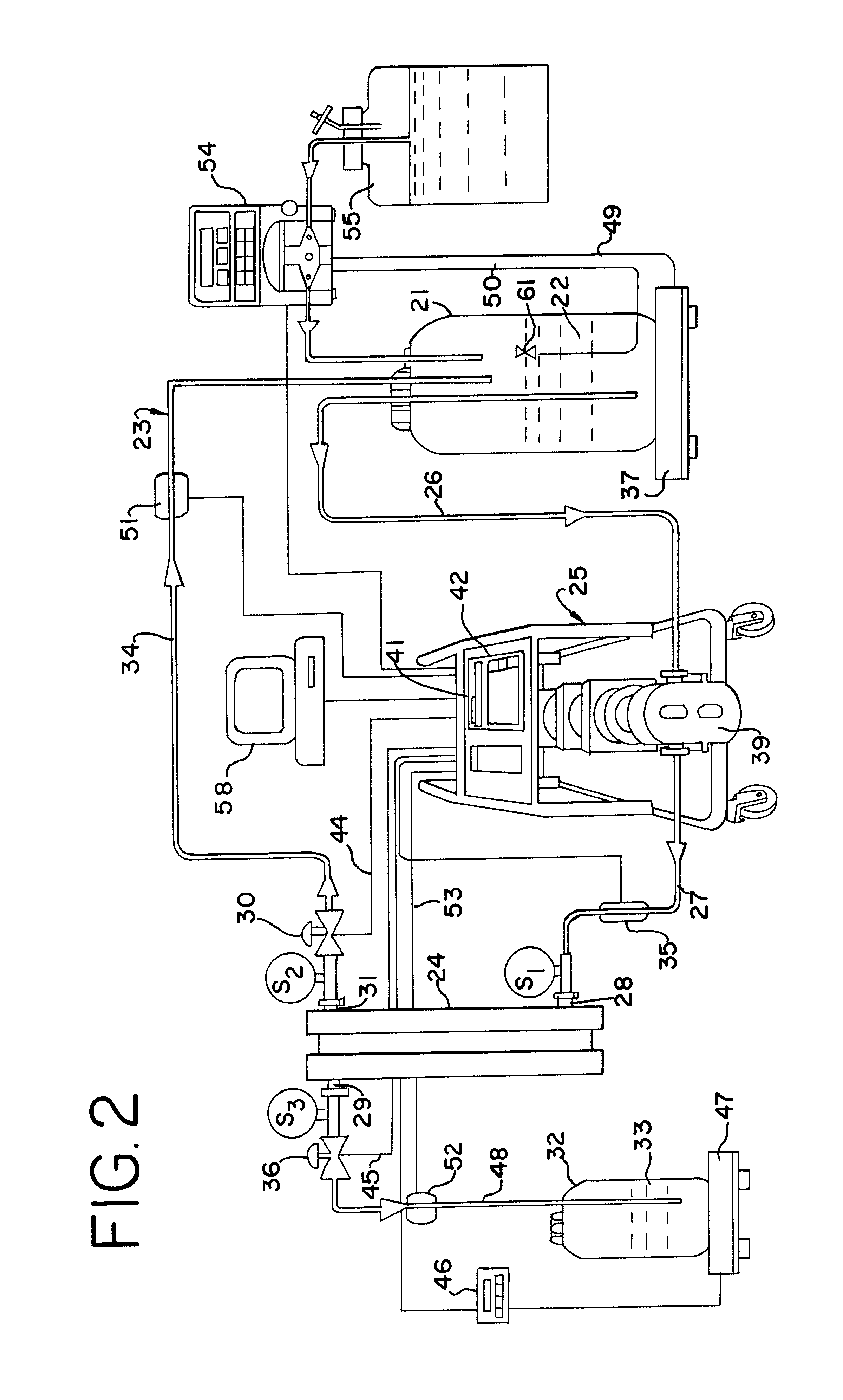Method and apparatus for enhancing filtration yields in tangential flow filtration
a technology of tangential flow and filtration, applied in the direction of multi-stage water/sewage treatment, membranes, separation processes, etc., can solve the problems of clogging of filtration devices, affecting the yield of filtration, and affecting the quality of filtration, so as to enhance the separation process, improve the yield, and high precision separation
- Summary
- Abstract
- Description
- Claims
- Application Information
AI Technical Summary
Benefits of technology
Problems solved by technology
Method used
Image
Examples
example 1
This example illustrates how the system was used to separate extracellular protein (IgG) from a suspension of cells. In this example, a 500 liter suspension of Chinese Hamster Ovary (CHO) cells was the process solution placed within the reservoir 21. The filtration system included a SciPro processor controlled pump unit having a peristaltic pumphead from Cole-Parmar, and an I / P High Precision pumphead. The filtration unit was a Sartocon II cross-flow filtration system available from Sartorius using a 0.45 micrometer Hydrosat cassette. The processor unit was set with the following operating conditions: the cell concentration within the 500 liter batch was 3.times.10 to the 6.sup.th cells / ml. The membrane surface area was 0.6 m.sup.2, with the cross-flow recirculation rate being 12 liters / min using a number 88 Masterflex.TM. pump tubing. The inlet pressure (P1) was initially 10 psi; the retentate pressure (P2) was initially 5 psi; and the permeate pressure (P3) was initially 2.5 psi, ...
example 2
The 498 liters of media collected in Example 1 were subjected to a subsequent step of a multi-step separation strategy. The collected media containing the extra-cellular protein (IgG) was concentrated by ultrafiltration within the same type of system. The particular system also included a SciPro processor controlled pump unit of Scilog, Inc., having a Fristam Model 55S lobe pumphead. This system was used to concentrate the dilute protein solution from 498 liters to 2.0 liters, a concentration of approximately 250 times. The filtration system was a Sartocon II cross-flow filtration system using a 20000 MWCO "Ultrasart" cassette. The membrane surface area was 0.7 m.sup.2, the recirculation rate being 17 liters / min. The inlet pressure (P1) was 30 psi, the retentate pressure (P2) was 10 psi, and the permeate pressure (P3) was 0 psi. The trans-membrane pressure was constant at 20 psi during the 4.5 hour processing time.
With this tangential-flow filtration device, the protein remained in ...
PUM
| Property | Measurement | Unit |
|---|---|---|
| pressure | aaaaa | aaaaa |
| oscillating pressure | aaaaa | aaaaa |
| surface area | aaaaa | aaaaa |
Abstract
Description
Claims
Application Information
 Login to View More
Login to View More - R&D
- Intellectual Property
- Life Sciences
- Materials
- Tech Scout
- Unparalleled Data Quality
- Higher Quality Content
- 60% Fewer Hallucinations
Browse by: Latest US Patents, China's latest patents, Technical Efficacy Thesaurus, Application Domain, Technology Topic, Popular Technical Reports.
© 2025 PatSnap. All rights reserved.Legal|Privacy policy|Modern Slavery Act Transparency Statement|Sitemap|About US| Contact US: help@patsnap.com



